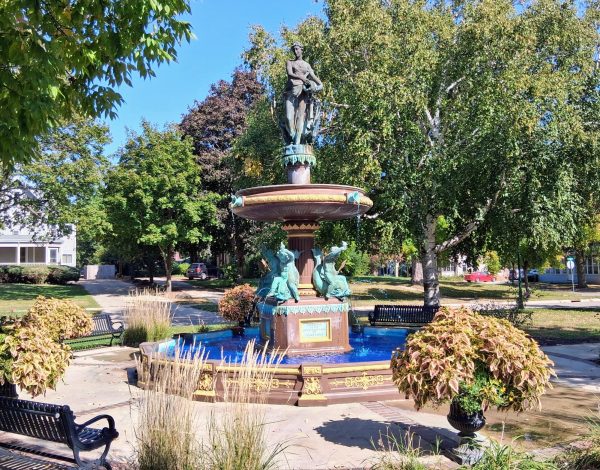The City of Whitewater Landmarks Commission met Oct. 1 to discuss several ongoing projects in the community, including maintenance on historical property, donations for landmark restoration and plans for upcoming milestone celebrations.
The meeting started by addressing the issue of unsigned oaths. Member Pat Blackmer asked for all commissioners to complete and return their oaths with another member, Kelsey Reilly, agreeing to relay the message to absent members. The oaths need to be signed in order to ensure the commissioners are in compliance with city policy.
The commissioners next reviewed the progress of the historical Whitewater Effigy Mounds Preserve.
“We have not had a report at this time,” Blackmer said. “I will see state archaeologist Amy Roseborough in two weeks at the Historic Preservation Convention and ask if in fact there are fares out at the Effigy Mounds.”
It was agreed to revisit the topic once that encounter occurs and more information is available.
The commissioners next discussed any updates on the transferring of bookcases from Whitewater’s Armory to UW-Whitewater’s Andersen Library. The project is slightly delayed due to communication issues. It was noted that the university had not sent someone over to inspect the bookshelves yet, which added onto the delay. The resolution was to try and make contact one more time, otherwise the last set of bookshelves would be brought for consideration to the landmarks.
Another major discussion centered around a potential $10,000 anonymous donation for restoration to the city’s historic water tower. In order for the donation to be accepted, there must be proof that the individual will donate the money so the financial department can be aware. It was called into question if the commissioners should contact the city attorney and have a document drafted.
The document would also make the common council aware that the donation is available, provided the city of Whitewater matches the donation leading to a $20,000 investment.

(Kory Makos)
The Birge Fountain, located downtown, was also a topic of concern. The fountain has not been assessed since 2017. Its rusting interior could become a major issue within the next two years as the 10-year mark approaches from the assessment.
“At that time, we had McKay Laboratories from Ohio do an assessment on the Birge Fountain, and they gave us a time span of 10 years before the fountain would need some repairs,” Blackmer said. “The estimated cost at the time for a total repair of the fountain was $125,000. A complete restoration means it would have to be dismantled and shipped to their laboratory in Ohio.”
While the issues relating to the fountain will not be handled for another two years, it was noted that keeping it on the agenda and in the back of their minds was important as 2027 approaches.
The commissioners discussed plans to celebrate the Bassett House’s 100th anniversary of its Whitewater Federation of Women’s Clubs which will coincide with the America 250 celebration. The house was built in 1857 and owned by the masses. Florence Bassett bequeathed the house to the WFWC, and it will have been in their ownership for 400 years in 2026. All members agreed in support of the celebration.
Community education was the next topic. On behalf of the landmarks commission, Blackmer had done two presentations, one for Discover Whitewater and most recently at the Fairhaven Community Center, in which she discussed the Starin Park Water Tower. Hopes for a library presentation are delayed until 2026 with hopes to have a display at Andersen Library during the month of May.
“If you’re interested in doing something with the library, they do displays for different things on a month long basis all of the time,” commissioner Orin Smith said. “We could also see about partnering with a campus department or student organization to host a presentation as a campus event as well.”
Finally, the commission discussed potentially declaring the Lambda Chi Alpha fraternity house an official landmark. Located on North Street, the house was built by Nelson Salisbury in 1874. While its potential to officially become a landmark is uncertain, the commissioners are optimistic it will be.

